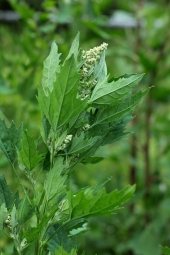We share the same challenges of dealing with low soil temperatures in a short growing season climate which can be compounded by the very long season of freezing temperatures. If the snow cover is poor, a deep layer of frozen ground can persist, well after thawing of the superficial soil. This provides a deep reservoir of soil cooling. The nitrogen cycles and mineralization are also greatly changed below 50 F and rate of uptake of other nutrients and nitrogen can fall rapidly. From our experience, as Robert notes, nightshades (tomatoes, tomatillas, peppers) are very sensitive. We have been experimenting with cucumber varieties but all are sensitive. There really aren’t too many things that do really well starting out in cold dirt except for some perennials like fuki and rhubarb that have almost magical ability to grow out of still frozen ground.
Patience is not my strongpoint, so raised beds, tunnels and a large number of very hot Berkley style
compost piles to heat up the ground are used. I think I had 13 compost piles going at one time at the beginning of the season, which can rapidly raise soil temps. The lack of patience got me into some trouble when I had unfinished piles that created their own issues with nitrogen immobilization but that is a temporary problem! This makes me look pretty reasonable compared to a neighbor that was so frustrated he was dumping gasoline and lighting it to warm his garden. This might be viewed as problematic on several levels

.
It has made me a more effective gardener, since I started to test soil temps at various levels with a compost thermometer and learned to probe with a thin rod for the ice level. The dynamics of soil insulation and temperature cycle raise some special consideration for using hugelkulture in a cold, long winter climate, but that is a topic for another time.






